பத்தாம் வகுப்பிற்கு கணித பாடத்தில் கற்பிக்கும் ஆசிரியர்களும் மற்றும் மாணவ மாணவியர்களுக்கும் அன்பான வணக்கம்...,
நமது www.kanimaths.com website ஆசிரியர்களுக்கும் மாணவ மாணவியர்களுக்கும் கணித பாடத்தில் பயன்படும் வகையில்
Chapter - 1 : Relations & Functions EXERCISE : 1.4 அனைத்து கணக்குகளும் தனித்தனியாக தொகுக்கப்பட்டு விடைகளுடன் solved செய்து கீழே கொடுக்கப்பட்டுள்ளது.
ஆசிரியர்களுக்கு பாடம் நடத்தும் வேலையில் ஏதேனும் சந்தேகங்கள் இருந்தால் கீழே கொடுக்கப்பட்டுள்ள கணக்குகளை refer செய்து கொள்ளலாம்.Chapter -1 பயிற்சி கணக்குகள் அனைத்தும் தனித்தனியாக தொகுக்கப்பட்டு கீழே கொடுக்கப்பட்டுள்ளது.
மேலும் மாணவர்களுக்கும் சந்தேகங்கள் இருந்தால் கீழே கொடுக்கப்பட்டுள்ள கணக்குகளை பார்த்து சந்தேகங்களை சரி பார்த்துக் கொள்ளலாம்.
Question 1.
Determine whether the graph given below represent functions. Give reason for your answers concerning each graph.
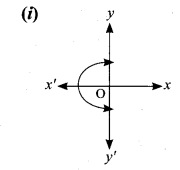
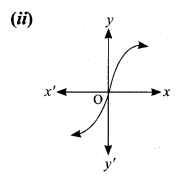
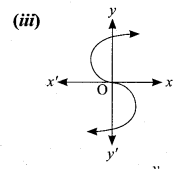
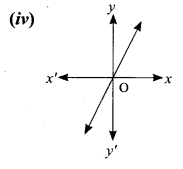
Answer:
Question 2.
Let f: A → B be a function defined by
f(x) =
B = {0,1,2,4,5,9}. Represent f by
(i) set of ordered pairs
(ii) a table
(iii) an arrow diagram
(iv) a graph
Answer:
A = {2,4,6, 10, 12}
B = {0,1, 2, 4, 5, 9}
f(x) =
f(2) =
f(4) =
f(6) =
f(10) =
f(12) =
(i) Set of ordered pairs
f = {(2, 0) (4, 1) (6, 2) (10, 4) (12, 5)}
(ii) Table
Question 3.
Represent the function f = {(1,2), (2,2), (3,2), (4,3),(5,4)} through (i) an arrow diagram (it) a table form (iii) a graph.
Answer:
f = {(1, 2) (2, 2) (3, 2) (4, 3) (5,4)}
Let A = {1,2, 3, 4, 5}
B = {2, 3, 4}
(i) Arrow diagram
Answer:
f: N → N
N = {1,2,3,4,5,… }
f(x) = 2x – 1
f(1) = 2(1) – 1 = 2 – 1 = 1
f(2) = 2(2) – 1 = 4 – 1 = 3
f(3) = 2(3) – 1 = 6 – 1 = 5
f(4) = 2(4) – 1 = 8 – 1 = 7
f(5) = 2(5) – 1 = 10 – 1 = 9
f = {(1,1) (2, 3) (3, 5) (4, 7) (5,9) …..}
(ii) Here Range is not equal to co-domain. This function not an onto function.
∴ The given function is one-one but not an onto.
Show that the function f: N ⇒ N defined by f(m) = m2 + m + 3 is one-one function.
Answer:
N = {1,2,3, 4,5, ….. }
f(m) = m2 + m + 3
f(1) = 12 + 1 + 3 = 5
f(2) = 22 + 2 + 3 = 9
f(3) = 32 + 3 + 3 = 15
f(4) = 42 + 4 + 3 = 23
f = {(1,5) (2, 9) (3, 15) (4, 23)}
Question 6.
Let A = {1, 2, 3, 4) and B = N. Let f: A → B be
defined by f(x) = x3 then,
(i) find the range off
(ii) identify the type of function
Solution:
A = {1, 2, 3, 4}
B = N
f: A → B,f(x) = x3
(i) f(1) = 13 = 1
f(2) = 23 = 8
f(3) = 33 = 27
f(4) = 43 = 64
(ii) The range of f = {1, 8, 27, 64 )
(iii) It is one-one and into function.
Question 7.
In each of the following cases state whether the function is bijective or not. Justify your answer.
(i) f: R → R defined by f (x) = 2x + 1
(ii) f: R → R defined by f(x) = 3 – 4x2
Answer:
(i) f(x) = 2x + 1
f(0) = 2(0) + 1 = 0 + 1 = 1
f(1) = 2(1) + 1 = 2 + 1 = 3
f(2) = 2(2) + 1 = 4 + 1 = 5
f(3) = 2(3) + 1 = 6 + 1 = 7
Different elements has different images
∴ It is an one-one function.
It is also an onto function. The function is one-one and onto function.
∴ It is a bijective function.
(ii) f(x) = 3 – 4x2
f(1) = 3 – 4(1)2
= 3 – 4 = -1
f(2) = 3 – 4(2)2 = 3 – 16 = – 13
f(3) = 3 – 4(3)2 = 3 – 36 = – 33
f(4) = 3 – 4(42) = 3 – 64 = – 61
It is not a bijective function. The positive numbers “R” do not have negative pre – image in X in R.
Let A= {-1,1}and B = {0,2}.
If the function f: A → B defined by
f(x) = ax + b is an onto function? Find a and b.
Answer:
A = {-1, 1}; B = {0,2}
f(x) = ax + b
f(-1) = a(-1) + b
0 = -a + b
a – b = 0 ….(1)
f(1) = a(1) + b
2 = a + b
a + b = 2 ….(2)
Solving (1) and (2) we get
Substitute a = 1 in (1)
The value of a = 1 and b = 1
Question 9.
If the function f is defined by

find the value of
(i) f(3)
(ii) f(0)
(iii) f(1. 5)
(iv) f(2) + f(-2)
Answer:
f(x) = x + 2 when x = {2,3,4,……}
f(x) = 2
f(x) = x – 1 when x = {-2}
(i) f(x) = x + 2
f(3) = 3 + 2 = 5
(ii) f(x) = 2
f(0) = 2
(iii) f(x) = x – 1
f(-1.5) = -1.5 – 1 = -2.5
(iv) f(x) = x + 2
f(2) = 2 + 2 = 4
f(x) = x – 1
f(-2) = – 2 – 1 = – 3
f(2) + f(-2) = 4 – 3
= 1
Question 10.
A function f: [-5, 9] → R is defined as follows:
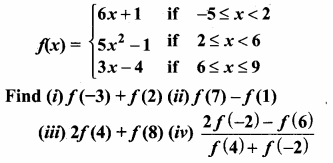
Answer:
f(x) = 6x + 1 ; x = {-5,-4,-3,-2,-1,0,1}
f(x) = 5x2 – 1 ; x = {2, 3, 4, 5}
f(x) = 3x – 4 ; x = {6, 7, 8, 9}
(i) f(-3) + f(2)
f(x) = 6x + 1
f(-3) = 6(-3) + 1 = -18 + 1 = -17
f(x) = 5x2 – 1
f(2) = 5(2)2 – 1 = 20 – 1 = + 19
f(-3) + f(2) = – 17 + 19
= 2
(ii) f(7) – f(1)
f(x) = 3x – 4
f(7) = 3(7) – 4 = 21 – 4 = 17
f(x) = 6x + 1
f(1) = 6(1) + 1 = 6 + 1 = 7
f(7) – f(1) = 17 – 7
= 10
(iii) 2f(4) + f(8)
f(x) = 5x2 – 1
f(4) = 5(4)2 – 1 = 5(16) – 1
= 80 – 1 = 79
f(x) = 3x – 4
f(8) = 3(8) – 4 = 24 – 4 = 20
2f(4) + f(8) = 2(79) + 20
= 158 + 20
= 178
f(-2) = 6(-2) + 1 = -12 + 1 = -11
f(x) = 3x – 4
f(6) = 3(6) – 4 = 18 – 4 = 14
f(x) = 5x2 – 1
f(4) = 5(4)2 – 1 = 5(16) – 1
= 80 – 1 = 79
f(x) = 6x + 1
f(-2) = 6(-2) + 1 = -12 + 1 = -11
Question 11.
The distance S an object travels under the influence of gravity in time t seconds is given by S(t) =
Solution:
S(t) =
Let t be 1, 2, 3, ………, seconds
S(1) =
S(2) =
Yes, for every different values of t, there will be different values as images. And there will be different preimages for the different values of the range. Therefore it is one-one function.
Question 12.
The function ‘t’ which maps temperature in Celsius (C) into temperature in Fahrenheit (F) is defined by
t(C) = F where F =
(i) t(0)
(ii) t(28)
(iii) t(-10)
(iv) the value of C when t(C) = 212
(v) the temperature when the Celsius value is equal to the Fahrenheit value.
Answer:
Given t(C) =
(i) t(0) =
= 32° F
(ii) t(28) =
=
= 50.4 + 32
= 82.4° F
(iii) t(-10) =
= -18 + 32
= 14° F
(iv) t(C) = 212
= 180
9C = 180 × 5
C =
= 100° C
(v) consider the value of C be “x
t(C) =
x =
5x = 9x + 160
-160 = 9x – 5x
-160 = 4x
x =
The temperature when the Celsius value is equal to the fahren heit value is -40°
Composition of two Functions
Let f: A → B and g: B → C be two functions. Then the composition of f and g denoted by go f is defined as the function go f (x) = g[f(x)] for all x ∈ A.
Composition of three Functions
Let A, B, C, D be four sets and let f: A → B; g : B → C and h : C → D be three functions, using composite functions fog and goh, we get two new functions like (fog) oh and fo (goh).
Note: Composition of three function is always associative.
பத்தாம் வகுப்பு கணித பாடத்திற்கு அனைத்து பயிற்சி கணக்குகளுக்கும் அனிமேஷன் மூலம் எடுக்கப்பட்டுள்ளது.மேலும் மாணவர்களுக்கு சந்தேகங்கள் இருந்தால் கீழே கொடுக்கப்பட்டுள்ள CLICK HERE என்ற ஆங்கில வார்த்தையை பயன்படுத்தி சந்தேகங்களை சரிபார்த்துக் கொள்ளலாம்.



















.jpg)
.jpg)
.jpg)








0 Comments